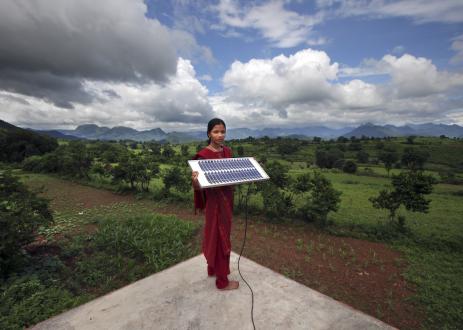可再生能力的可持续发展影响:来自三个印度州的见解
This paper applies WRI’s 'Framework to Assess the Sustainable Development Impacts of Renewable Power Technologies' to estimate the economic rate of return (ERR) associated with prominent renewable energy (RE) technologies in three Indian states: Maharashtra, Jharkhand, and Assam. The analysis provides insight into context-specific drivers of socioeconomic returns from RE deployment that can inform local technology choices and deployment policies to maximize the societal benefits of renewable energy.
As India scales renewable energy (RE) deployment to meet its recently announced target of installing 500 gigawatts (GW) of fossil-free capacity by 2030, it is critical that RE technologies be deployed considering the full range of their socioeconomic and environmental impacts. WRI’s ‘Framework to Assess the Sustainable Development Impacts of Renewable Power Technologies’ provides a structured approach to identifying and, where feasible, quantifying such impacts.
This analysis applies the framework to estimate the economic rate of return (ERR) associated with different renewable energy (RE) technologies in the Indian states of Maharashtra, Jharkhand, and Assam, extending our previous research where we applied the framework at the national level. In doing so, it aims to gain insight into the context-specific drivers of socioeconomic returns from RE deployment that can inform local technology choices and deployment policies to maximize the societal benefits of renewable energy.
评估的技术包括所有三个州的太阳能光伏和小水电,以及马哈拉施特拉邦的风。在我们的错误估计中,我们考虑了重新部署的健康,水,土地和气候影响以及传统现金流,以必威官网是真的吗及传统现金流。我们的定量估计未捕获某些相关影响,例如有关就业,能源安全和某些生态影响的影响。我们建议与ERR数字结合使用定性地将其视为。
关键发现:
- 在这三个州中,我们发现所有评估的技术的马哈拉施特拉邦回报率最高,其次是贾坎德邦,然后是阿萨姆邦。比较每个州内技术的相对回报,我们发现马哈拉施特拉邦的风,贾坎德邦的太阳能PV和阿萨姆邦的小型水力发电的回报最高。
- Local factors, such as the prevailing population and land-use patterns, water scarcity, and weather conditions, play a vital role in driving the ERR estimates.
- Comparing our ERR estimates against a social discount rate value of 8 percent shows that all the assessed RE technologies, except solar PV in Assam, provide a sufficiently high return to society to justify public investment.
- Although not all impacts can be economically quantified, our analysis underscores the need for including a wider set of sustainable development impacts in planning and deployment of renewable energy at the local level.
项目
-

跟踪和加强气候行动必威官网是真的吗
访问项目Supporting national governments with tools and resources to track progress toward meeting their national climate commitments and to strengthen climate action.
部分 必威官网是真的吗


